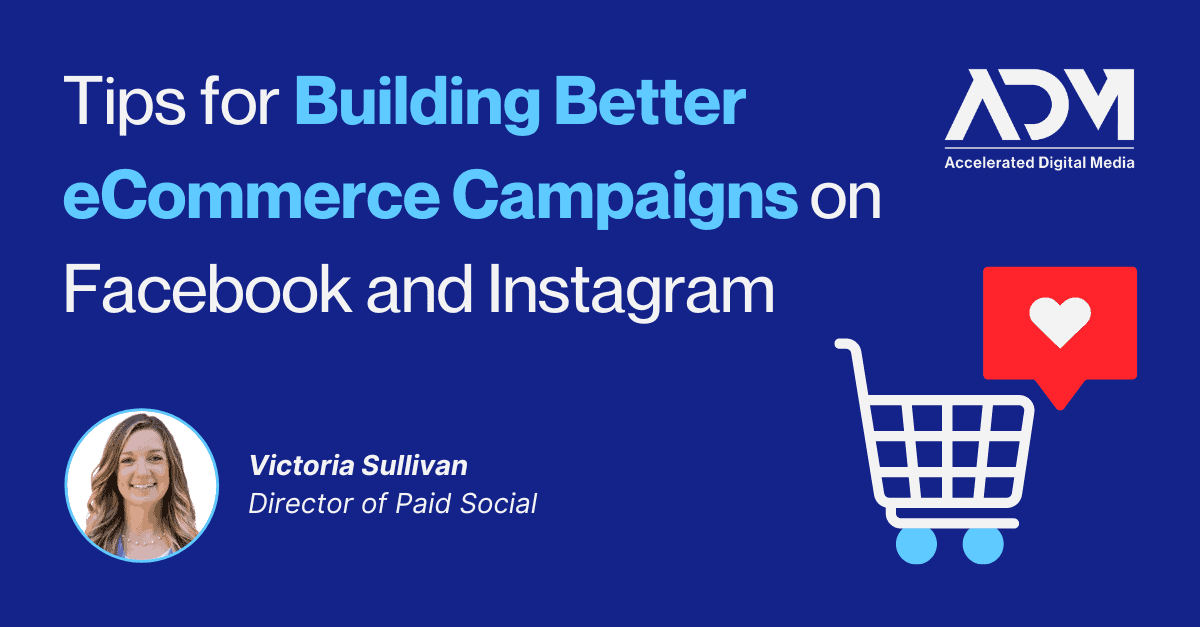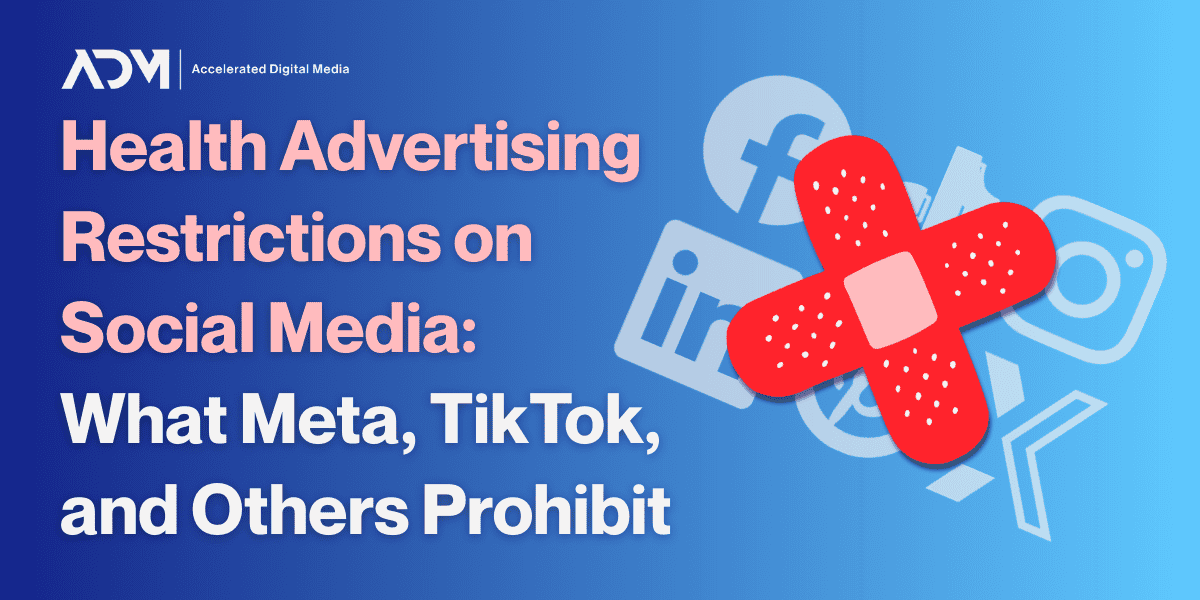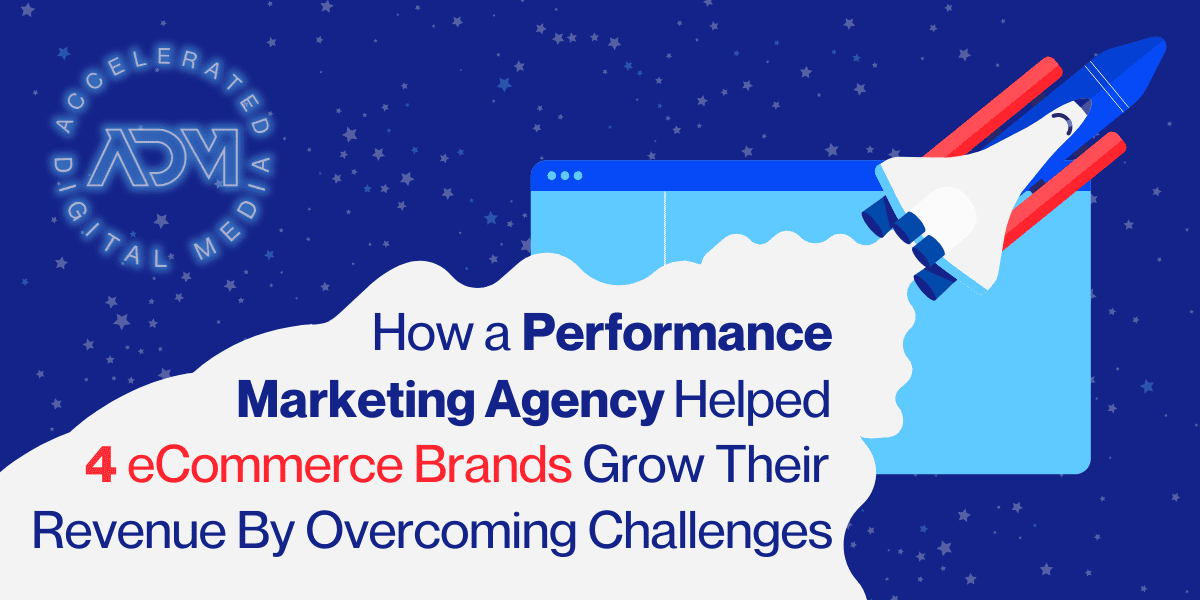Facebook and Instagram are an essential part of most eCommerce strategies, but many advertisers don’t realize that they could be getting more out of their social media dollars. Just deploying best-practice campaign types and reading out the results that Meta Ads reports isn’t going to be the best way to maximize your Meta Ads.
In this blog, we’ll go a little deeper to identify some techniques and practices that will help you truly optimize your Meta Ads throughout your d2c eCommerce funnel.
Utilize Video View campaigns to qualify eCommerce prospects
To leverage Meta as an eCommerce driver, brands need to target audiences that are actually interested in their products. That’s why ADM recommends that eCommerce brands implement a video view campaign on Meta Ads.
For awareness, brands might be tempted to deploy campaigns with a reach goal—but a video view campaign is a better option. This type of campaign is designed to optimize for “thru plays,” defined as a view of 15 seconds or more. Individuals who watch a video for at least 15 seconds are a more relevant audience compared to those who quickly scroll past.
There are two key advantages to using a video view campaign over a reach campaign for top-of-funnel eCommerce prospecting on Meta:
- Reach campaigns focus on generating a high volume of views, a 15-second video view holds more value because it’s a more engaged impression than a mere one-second scroll.
- Video views can be retargeted. That allows you to create a list of viewers and tailor retargeting strategies or develop lookalike audiences based on this data. This information is particularly valuable for later stages of your marketing funnel and is not achievable with a reach objective.
Once individuals have interacted with the top of the funnel by watching 15 seconds or more of a video, they are subsequently exposed to ads prompting them to visit the website and eventually make a purchase. This approach provides new prospects with the opportunity to familiarize themselves with the brand through video content and then guides them through subsequent touchpoints, leading them toward a purchase.
Measure Meta Ads impact incrementally
For effective d2c eCommerce, you need to constantly optimize off of historical data. That means you need to understand which of your ads initiatives have worked best—and on Meta, that’s sometimes a challenge.
Because you can reach so many people on Meta so cost-effectively, it can be difficult at times to pinpoint the exact impact your Meta ads had compared to other marketing initiatives that customers may have seen throughout their purchase journey. To get a true understanding of this, it’s important to look deeper than the campaign readouts you see in the Meta Ads interface.
To accurately assess Meta’s impact, it is crucial to measure its incremental effect. By incremental impact, we refer to the influence of Meta touchpoints on a user’s decision to make a purchase. There are a number of great third-party attribution platforms like Measured that are effective for measuring this impact.
There are also in-platform tests available for this purpose. Meta provides brand lift and conversion lift tests within its platform. The conversion lift test involves segregating a control group to understand their behavior without exposure to your ads so that they can be compared with those who have viewed your ads. The lift represents the additional impact or difference that viewing your Meta ads has on the audience’s actions or purchases (for more information on these tests, a comprehensive guide is available on Meta’s website here).
Don’t be afraid of “ugly” ads on Instagram and Facebook
Don’t be afraid of ugly ads. Of course, we’re not saying you should ever run an ad that is poorly made or off-putting—but we’ve found that it’s easy for brands to forget that social media is not TV. The content you use for your Meta Ads creative should not echo the production characteristics of TV creative. When we say “ugly” ads, we really just means ads that look like what people are used to seeing when they scroll through their feed on Facebook, Instagram, TikTok, or whatever other social platform you are advertising on.
For instance, things like polls and interactive question and answer overlays are native to Instagram Stories. If users are used to seeing and interacting with that type of content on that platform, your ads should embrace it. The last thing you want to do is have your content stick out clearly as an advertisement, which slickly-produced creative often does.
Make your content feel more native to the platform. Video ads that respond to user comments have become common on TikTok and spread to Instagram Reels. Utilizing this type of approach in your ads will increase the likelihood that people watch them and engage with them.
Take advantage of all the Meta Ads mediums at your disposal
In almost every eCommerce advertising situation, we recommend taking advantage of every type of creative that Meta allows, but to do so with a good understanding of what those types should do and how you need to deploy them. How much you invest in each method should be driven by the results you see from different ad creatives and ad types.
At ADM, we typically emphasize product-focused creative, Advantage+ testing campaigns, and an Advantage+ scaling campaign. For example, all eCommerce brands should test collection ads that showplace multiple products from the same category. The eCommerce brands we work with see great results from this ad format basically across the board, but their relative success rate (how much better they do than other ad types) usually varies. That influences how much spend we will devote to that specific ad type.
The same principle extends to different types of ads. Dynamic product ads (DPAs) rely on an eCommerce product feed. The effective management of this feed significantly affects the performance of these ads. Failing to promptly remove out-of-stock items from the feed or restock them can impact the success rate of these ad variants. It’s important to separate Advantage+ DPA campaigns from standard ads—DPA ads tend to steal all the budget.
These highly-product-focused ads often outperform lifestyle-focused ads that brands typically deploy to boost awareness or stay top-of-mind. But that doesn’t mean a lifestyle-focused ad can’t be effective for your brand: It just means you need to test and compare.
Utilize Meta Post IDs to maintain social proof
This tip involves both the organic and the paid side of Meta Ads. The organic part is this: It’s important that someone from your brand takes the time to respond to the comments on your ads. This is both good customer service behavior and a way to build social proof (basically, the persuasive power of seeing others engaging on a social post. The comment preview in a Facebook or Instagram post will show the total number of comments, even if half are responses from the brand. Social proof of 20 comments is 2X stronger than 10 comments—and keep in mind that just liking or reacting to a comment does not build social proof.
That, in turn, feeds into the other side of this equation: utilizing post IDs. All posts on Facebook and Instagram have an accompanying post ID, and by taking advantage of those IDs you can maintain the social proof your ads have built up. If an ad launches in a test campaign and receives strong engagement—which you helped foster organically—you can carry that social proof over with the ad when you move it from a testing environment and into your core campaigns. This way, the social proof from your ad spend across multiple campaigns can compound better than it would were the same ad creative posted separately.
If you’re looking for an eCommerce marketing partner that always goes deeper to find new areas of opportunity, and never deploys cookie-cutter campaigns for its social clients, reach out to the team at ADM today.




